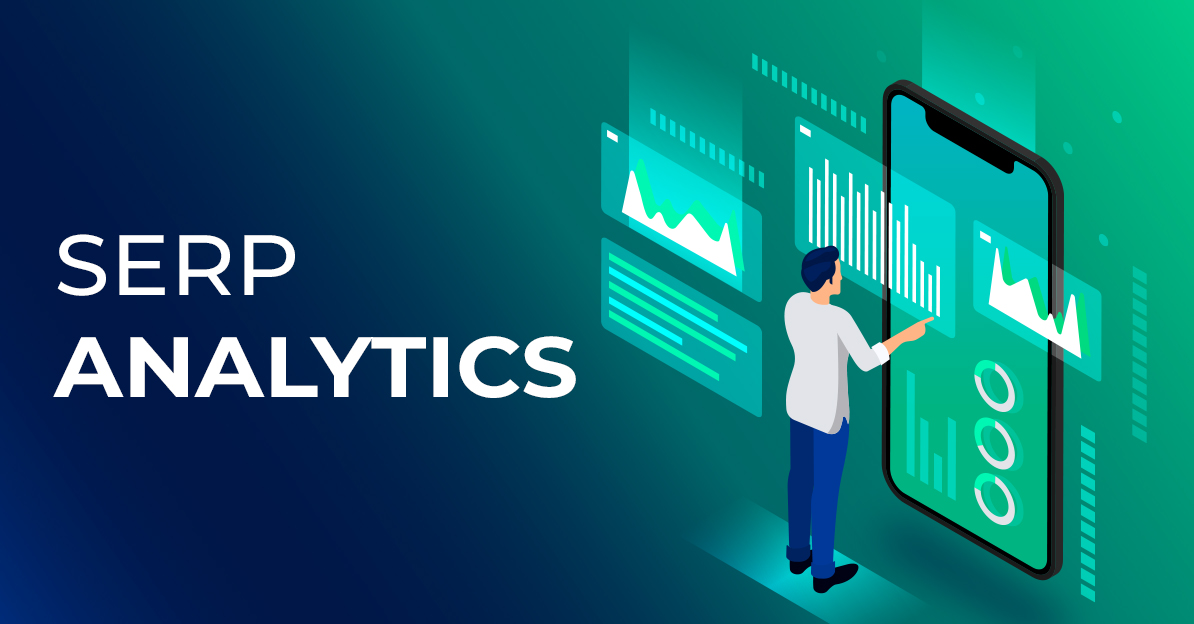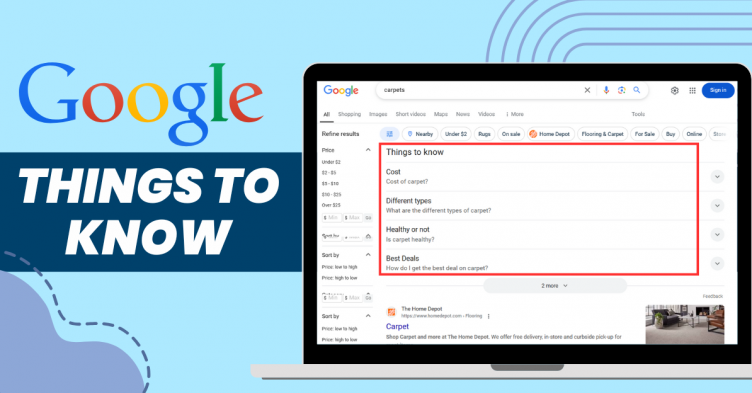In today’s competitive market, search marketers must focus heavily on their SEO marketing efforts and generate traffic on Google where SERP Analysis plays an important role. It provides a better understanding of your competitive SERP strategy to gain a competitive advantage. With the increasingly populated SERP and Google’s rapidly changing algorithm, it is crucial to analyze competitive Search Engine Results Pages (SERP) and aim to appear in all SERP features for your website to rank high and stay on top of the ever-changing Google search results.
Table of Contents: Show
- What is Competitive SERP Analysis?
- Why is Competitive SERP analysis Important?
- Benefits of Competitive SERP Analysis
- Opportunities to Beat Competitors
- Threats to Organic Traffic
- Planning the Right Content for Relevant and Valuable Keywords
- Other SERP Feature Opportunities
- Gain Insights on Competitive Pricing Data
- Get Insights from a Comprehensive Keyword Research
- Smart Budget Mobilization and Cost Control
- Avoid Cannibalization Issues
This article offers valuable marketing strategic insights into a website’s SERP ranking, and optimization suggestions that can be applied to improve the domain’s SEO strategy. It emphasizes the importance of competitive SERP Analysis for marketers wanting to gain a better understanding of how to optimize their websites and achieve higher SERP rankings.
What is Competitive SERP Analysis?
Competitive SERP analysis is the process of closely monitoring the SERP on an ongoing basis and thoroughly analyzing the activities of rival brands in your digital niche. The objective is to devise effective strategies that keep you one step ahead in the competitive landscape. This entails meticulous scrutiny of how your competitors’ search engine results page (SERP) listings are presented, discerning what approaches yield the best results, and subsequently integrating these best practices into your own SEO efforts.
Google SERP analysis enables you to scrutinize the overall search results and discern the search intent behind the keyword, empowering you to maximize your chances of ranking for relevant keywords and outperforming your competitors. It assists you in making more informed decisions regarding the type of content that should be implemented on your website to enhance your SERP visibility and ranking.
Why Tracking SERP Competitors Matters?
Competitive SERP Analysis serves as an essential expansion of traditional analytical strategies, enabling businesses to address challenges and discover opportunities in the market. It goes beyond the limitations of search platform data alone, uncovering valuable insights that remain hidden in today’s highly competitive digital marketing space.
SERP Analysis empowers you to identify the crucial metrics necessary for utilizing the most relevant and valuable keywords. It provides a deeper understanding of search intent, reveals content gaps, and helps identify your competitors within each SERP. By leveraging these insights, you can create superior content, enhance your rankings, and drive better results in your digital marketing efforts.
The Benefits of SERP Competitor Analysis?
Outlined below are the eight diverse advantages that you can get from Competitive SERP Analysis:
- Opportunities to Beat Competitors
- Threats to Organic Traffic
- Planning the Right Content for Relevant and Valuable Keywords
- Other SERP Feature Opportunities
- Gain Insights on Competitive Pricing Data
- Get Insights from a Comprehensive Keyword Research
- Smart Budget Mobilization and Cost Control
- Avoid Cannibalization Issues
Let us discuss this more in detail.
1. Gain a Competitive Edge in Search
When conducting comprehensive keyword research, SERP analysis proves valuable in understanding the search intent behind relevant keywords. By analyzing the SERP content associated with a specific keyword, insights can be gained into how search engines (Google, Bing) interpret the intent.
For instance, let’s consider the long-tail keyword phrase “Best Outdoor Wireless Camera”. Analyzing the SERP content for this keyword reveals that 9 out of the top 10 results consist of blog articles. This suggests that Google identifies the intent of this keyword as informational or research-oriented. Consequently, to effectively compete for this keyword phrase, prioritizing informational content, such as articles, would enhance the likelihood of achieving higher rankings compared to product pages or category pages.
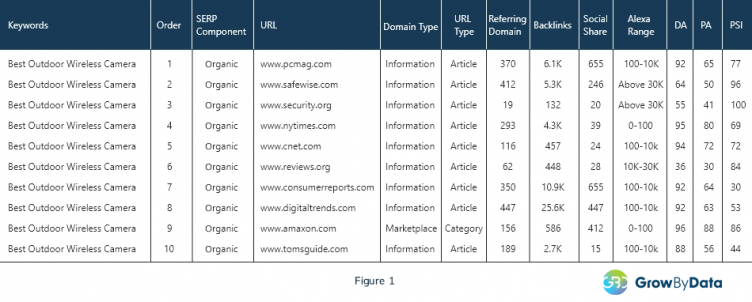
In addition to keyword planning and research, SERP analysis assists in assessing the competitiveness of keywords by examining metrics like “Referring Domains,” “Backlinks,” “Social Sharing,” and “Domain Authority” of each ranking page. If your website demonstrates superior metrics compared to your competitors, you have a greater likelihood of surpassing them with your highly optimized and relevant content.
2. Identify Threats to Your Organic Rankings
→ Learn more about how to monitor Google AI Overviews
In Fig 2 below the keyword phrase “Best Outdoor Wireless Camera” is shown above the fold of organic results in February. However, “Google Shopping Ads” is shown above the fold in March for the same keyword. This means that other competitors took the opportunity to outrank the organic results by focusing on Google Shopping Ads.

Marketers should optimize and plan to get the top results of the SERP. After all organic serp features have the highest chance of getting clicks than other SERP features. After analyzing the real-time SERP data, we found that big brands are always trying to rank on various SERP components to increase their Share of Search on Google.
Using the SERP analysis process, you can plan the right content compared to your top competitors in the SERP and find out what your competitors’ results are for certain keywords. We categorized the top competitors by URL and Domain Type. Selected electronics keywords were categorized like such:

The collected data were categorized based on URL and Domain Type to differentiate between competitors and non-competitors.
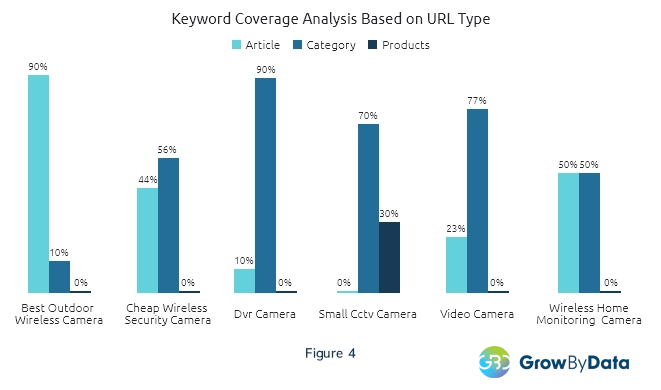
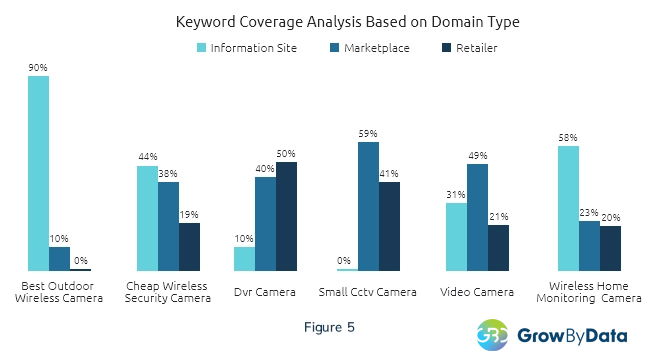
Per the image above, the keyword “Best Outdoor Wireless Camera”, 90% of the top results show URL type – “Article” page and Domain type – “Informational Sites”. This infers that 90% of SERP results are showing article-based results from Informational Sites (Non-Competitors).
However, in the keyword “Small CCTV Camera”, 59% of top results show Marketplace, and 41% show Retailers with no Informational Site in Domain Type. Whereas 70% of the top results show Category as URL Type and 30% show the Product Detail page with no Articles under URL Type. This infers that 100% of the top results are product competitors.
What steps can be taken :
- Develop or strategize “Informational Content” to target specific keywords by improving content quality, optimization, and addressing market gaps and user needs.
- If you fulfill the criteria of having a significant social share and referring domains, you can effectively compete with product detail or listing pages.
- Optimize your product details, content, and keyword bids to target Text or Shopping Ads. Utilize informational-based pages and content to target “People Also Ask” SERP features.
SERP analysis is a valuable technique for webmasters to assess the performance and relevance of their targeted keywords compared to competitors. It allows for the identification of opportunities within SERPs, aiding in the creation of a comprehensive search strategy. Through in-depth analysis, webmasters can determine the types of SERP features displayed by search engines i.e. Google & Bing, for specific search queries and user intents. This knowledge helps in understanding the competitive landscape and leveraging SERP features effectively.
For the keyword phrase “Best Outdoor Wireless Camera,” SERP features like People Also Ask, Google Popular Products, and Sponsored Ads are displayed. This indicates potential opportunities for other SERP features such as Featured Snippets, Videos, or Popular Tweets. Targeted efforts on specific SERP components can help obtain these opportunities.
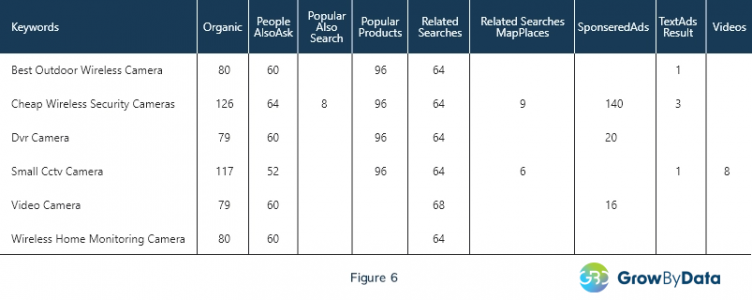
SERP analysis provides pricing data on your and your competitor’s products, helping you make informed pricing decisions. It enables you to increase CPC on products where you have the lowest price, boosting sales volume. This analysis also offers insights into metrics like conversion rate, customer acquisition cost, ROI, ROAS optimization, maximum bid per click, ad Quality Score, and competitors’ ad rank for the same keywords.
With our Pricing Intelligence Software, advertisers on Google can identify products suitable for price decreases. For Google Shopping advertisers, higher CPC prices can be advantageous if they lead to profitable conversions and a positive ROAS. For instance, if you have a 1% conversion rate with a $1 average CPC and a 2.5% conversion rate with an average CPC of $1.6, opting for the higher CPC would be beneficial due to its higher conversion rate.
6. Perform In-Depth Keyword Gap Research
Comprehensive keyword research expands your understanding beyond search volume alone. It enables you to gain deeper insights into your audience, decipher the search intent behind keywords, identify targetable SERP features, and assess the performance and potential of specific keywords. This valuable information empowers you to select the most relevant keywords for your niche and optimize your content to rank on a wide range of relevant keywords.
SERP Analysis data provides valuable insights into the shopper’s funnel stage based on their search query results. As an advertiser, you can leverage this information to make strategic decisions, including:
- Advertisers can optimize product details, highlight key features, offer competitive pricing, and utilize high-quality images to strengthen SEO instead of focusing on shopping ads for low-competition keywords.
- By prioritizing SEO, you can aim to rank in organic search results for top-of-the-funnel keywords, targeting shoppers in the research stage of their purchase journey.
- To increase the likelihood of conversions, advertisers can target shopping ads toward shoppers who are in the latter stages of their shopping journey. This can be achieved by focusing on high-volume bottom-of-the-funnel keywords.
- Advertisers can optimize text ads for mid-funnel keywords to provide additional product/service information.
Competitive SERP analysis empowers search marketers to compare themselves to direct and indirect competitors and wisely invest their budget into the right keywords to ultimately rank higher in search engine results pages (SERPs).
SERP analysis uncovers potential marketplace opportunities by providing data on website traffic, paid ads, organic performance, social media, and content. This information enables businesses to understand their competitive landscape, market overview, and digital shelf visibility. It also offers insights into competitor keyword strategies, effective marketing channels, and content optimization ideas, empowering businesses to make informed decisions and refine their marketing approach.
When search engines (Google, Bing) rank multiple pages from the same website for a specific keyword, competitive SERP analysis tools become valuable in understanding how these pages are positioned and ranked.
For example, Apple has several web pages competing for the same keyword. As a result, the search engine is unable to understand which page is to be ranked higher. This can prevent your pages from getting top rankings so, you can take advantage of data from the analysis to track and avoid cannibalization issues within and across SERP features and build a better promotional strategy.
For instance, Apple may have multiple web pages competing for the same keyword, leading to uncertainty in the search engine’s determination of the highest-ranking page. This can hinder your pages from achieving top rankings. By leveraging data from the analysis, you can track and mitigate cannibalization issues within and across SERP features, allowing you to develop a more effective promotional strategy.
To monitor competitive SERP, follow these five steps:
To increase clicks and traffic, conduct an opportunity analysis by targeting keywords that your competitors are not ranking for and identifying keywords with higher potential in SERPs. With the growing prevalence of SERP features, the number of no-click searches has been on the rise. It’s crucial to monitor and verify user engagement to ensure visits and clicks. This involves analyzing click metrics such as the number of clicks, search volume, target keywords, and search volume for relevant keywords. By doing so, you can ensure the selection of appropriate keywords for your niche.
Additionally, performing an opportunity analysis is essential for driving clicks and traffic. This process includes identifying untapped keywords and maximizing their potential for higher rankings in SERPs. By capitalizing on these opportunities, you can optimize your content and significantly improve your chances of increasing clicks and overall website traffic
Understanding user intent is crucial for delivering relevant content that matches search queries. Analyzing the SERP for your target keyword and evaluating top-ranked results’ URLs, titles, and snippets can help identify the intent they serve. By assessing searcher intent and comparing your content’s performance to competitors, a SERP Analyzer aids in selecting the right content type and refining your content strategy.
Identify where competitors are found in SERPs and see their Share of Voice (SOV) by line of business, keyword, location, device type, and above the fold visibility. See how competitors are earning their traffic with holistic views that highlight organic, paid, and total search share of voice.
4. Track SERP Features for Keyword-Level Ranking Opportunities
When SERP features appear for your keywords or queries, it’s important to capitalize on them by optimizing your content to appear in paid or organic results. SERP features encompass various elements like featured snippets, “People Also Ask,” video carousels, news, image packs, and more. By strategically targeting each feature, you can seize opportunities to rank at the top of the page and surpass your competitors. Utilizing SERP feature analysis allows you to identify available features for tracked keywords and monitor your targeted keyword, enabling you to spot opportunities on the SERP for higher rankings.
5. Monitor SERP Volatility and Competitor Movements
Given the dynamic nature of the SERP, it is vital to continuously monitor and stay updated on potential changes to effectively maintain your top organic position. By keeping track of SERP volatility, you can proactively address any changes that may impact your SERP rankings. Monitoring the fluctuation in SERP and understanding the volatility of each keyword can be achieved through the use of a reliable SERP rank tracker, which provides the best means to analyze SERP competitors and make informed decisions to optimize for SERP.
Competitor SERP Analysis: Conclusion
In summary, SERP analysis is crucial to understand how Google interprets SEO Intelligence data and determines the presentation of web pages on the search results page. It identifies optimization areas in SERP, and enables you to surpass competitors, thereby enhancing your SEO strategy.
The Search Intelligence solution is a robust platform that offers comprehensive insights into various SERP components, including above-the-fold opportunities or threats, SERP features, organic opportunities, and competitor presence by SERP feature. It goes beyond traditional SERP analytics by uncovering current SEO challenges and shows opportunities across different target locations and devices. This tool combines SERP analysis with competitive intelligence, providing a competitive advantage to boost holistic visibility into search, product, and marketplace intelligence.
